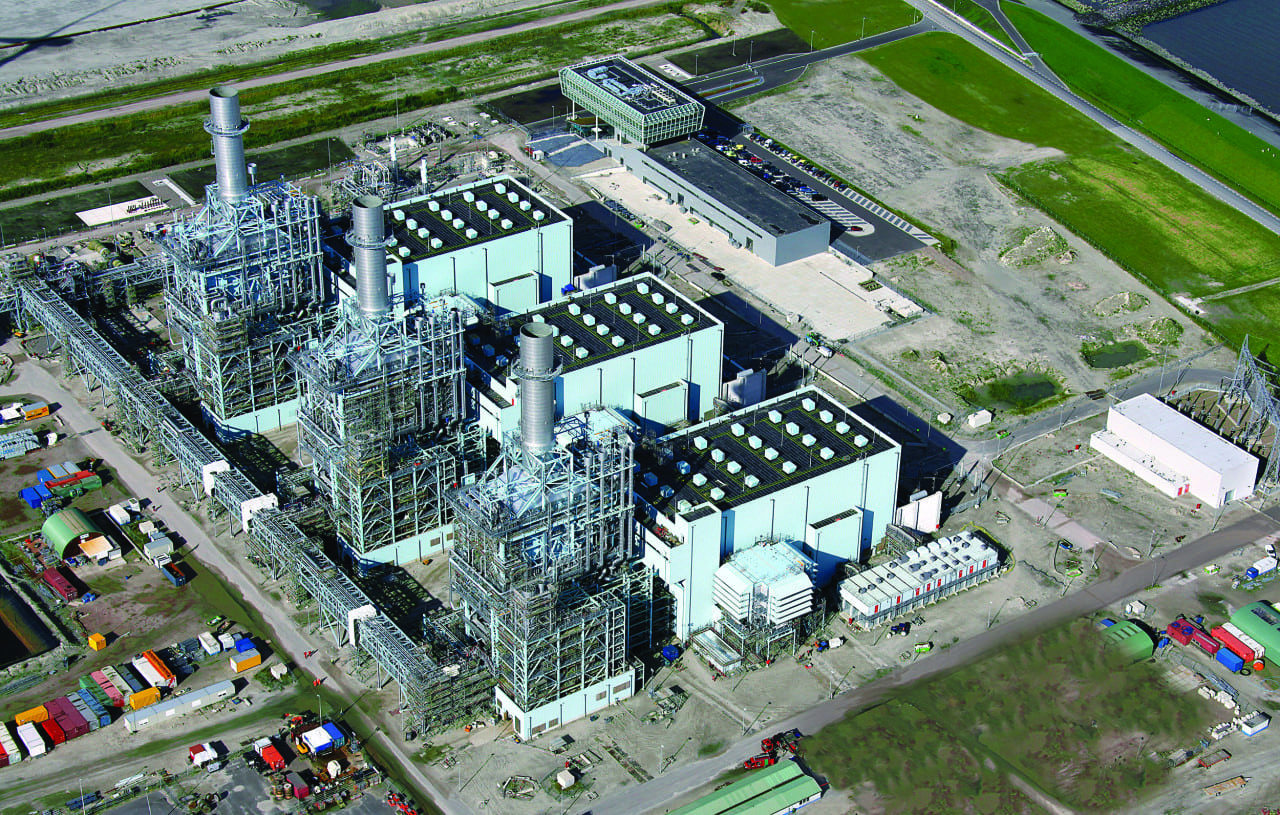MHPS Will Convert Dutch CCGT to Run on Hydrogen
Mitsubishi Hitachi Power Systems (MHPS) in March said it would work with the Netherlands Carbon-Free Gas Power project to support the conversion of the country’s 1.32-GW Magnum gas-fired power plant to run partly on hydrogen.
The plant (Figure 1), owned by Nuon, a Dutch subsidiary of Sweden’s Vattenfall, along with Dutch gas company Gasunie and Norway’s Statoil, features three 440-MW combined cycle gas turbines (CCGTs) made by MHPS. The Japanese company has experience in developing specialty fuels such as blast furnace gas and synthetics for its gas turbines, and it said the Magnum project would be used to test the feasibility of hydrogen as a fuel source for a CCGT.
The goal of the conversion is to help reduce the plant’s carbon emissions. The Netherlands government in mid-March said it would invest €300 million in a series of measures aimed at reducing the country’s carbon dioxide (CO2) emissions, including from power generation and transportation, with an investment of €15 million in the transport sector to build hydrogen fuel cell-powered buses, trucks and vans, and hydrogen filling stations.
“In order to meet the targets set by the Paris Agreement, CO2 emissions from the electricity sector in the Netherlands will have to be 55% to 75% lower in 2030 than in 1990,” said Alexander van Ofwegen, director of the Heat business unit with Nuon (Vattenfall’s Netherlands subsidiary). Ofwegen oversees operation of the Magnum facility. “We are therefore glad that MHPS will be of service in providing their expertise. The company has played an important part in building the Magnum power plant and is therefore a trusted technology provider for us in this next step for Magnum.”
The project aims to convert one of the plant’s three units to run fully on hydrogen by 2023, reducing the plant’s CO2 output by up to 1.3 million tons annually. Statoil’s role in the project will focus on producing hydrogen by converting Norwegian-produced natural gas into hydrogen and CO2. The CO2 will be stored in underground bunkers off the Norwegian coast, allowing carbon neutral production. Gasunie researchers will focus on how the hydrogen can be transported to the Magnum station, and on developing hydrogen storage at the plant.
The Magnum plant, which has operated for more than five years, was originally conceived in 2005 as a coal gasification project, running on syngas derived from coal. Nuon, though, citing the high cost of coal and opposition from environmental groups, instead decided to operate the plant as a gas-fired combined cycle facility.
—Darrell Proctor is a POWER associate editor.
